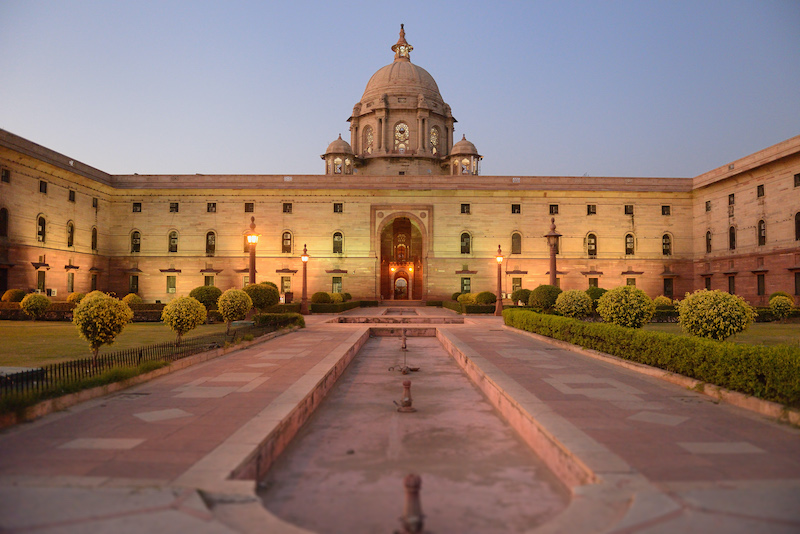
Executive action, and judicial deference to it, dominate India’s pandemic response.
The response to COVID-19 in India has become, and threatens to remain, a purely executive show.
Normally, India is a parliamentary, federal democracy with a bicameral legislature and a judiciary empowered to review administrative and legislative action for compliance with India’s Constitution. The advent of COVID-19, however, has seen many of these checks eroded or undermined. At both the federal and state level, the Indian government has addressed the pandemic primarily through executive orders.
The federal government, referred to as the “central” government, has invoked the Disaster Management Act of 2005 (DMA), while the several state governments have invoked the Epidemic Diseases Act of 1897 (EDA). Both laws contain broad umbrella clauses that allow the central and state governments to take any measure they deem necessary to address a disaster or epidemic. India’s executive authorities have used these two laws to impose a nationwide “lock-down”—the exact legal definition of which remains unclear—as well as to seal state borders, suspend transportation services and individual movement, and justify extensive quarantining and social distancing requirements.
It is important to note that neither of these laws are classic “emergency laws.” Neither the EDA nor the DMA involves politically risky, formal measures such as the proclamation of an emergency or the prorogation of Parliament. Rather, in the context of COVID-19, the EDA and DMA appear to have functioned as enabling laws, allowing governments expansive, almost unchecked, powers without requiring the politically fraught task of declaring an emergency and suspending civil liberties.
As a result of this invocation of such broad executive authority, the regulation of pandemic response measures has emerged as a web of intersecting administrative orders at the central and the state level. The federal Parliament and state legislatures have been bypassed entirely. India’s deliberative and representative bodies are therefore prevented from exercising scrutiny or oversight of executive actions.
Although India’s strict rules of parliamentary procedure—where a vote against the whip results in disqualification from the Lok Sabha, or House of the People—make it unlikely that a majority party would be defeated in a vote, a number of other checking functions are ordinarily available to both opposition and ruling party members. The invocation of the DMA and EDA, however, has bypassed such checking functions, including parliamentary questions, debates on the floor of the House, and scrutiny within parliamentary committees.
In the absence of a legislative check upon exertions of executive power, the courts may serve a checking function. In theory, Indian courts exercise review over executive action in two primary ways. First, courts may apply a reasonableness standard when reviewing administrative action. Second, courts may apply stricter constitutional review in cases of rights violations. Recent decisions have affirmed the proportionality standard for constitutional review, which includes evaluating an action’s necessity or the presence of a less restrictive alternative, as well as a strict proportionality, balancing analysis. Executive action should be reviewable for unreasonableness as well as for consistency with the Constitution.
For example, an intermediate court in the state of Odisha recently invalidated action taken by the Odisha state government. The state had disallowed private transport, and in doing so, seized and confiscated private two-wheeled vehicles. The court held that this action constituted a disproportionate restriction upon the freedom of movement because this restriction did not sufficiently take into account the needs of elderly people and people with disabilities who require transportation to purchase essential items such as food and medicine.
The Odisha court’s order, however, seems to be an anomaly. For the most part, Indian courts have abdicated their oversight function.
The Supreme Court of India, for example, recently ruled on a petition demanding that the government provide COVID-19 testing free of cost, considering the infectious nature of the virus and the extent of poverty in India. Initially, the Supreme Court mandated free testing by private labs, subject to government restrictions about who could get tested. This initial order did not include any discussion of the administrative or constitutional standards the Supreme Court applied in making its decision.
A few days later, the Supreme Court walked back its order, limiting its application to individuals already covered by an existing government insurance scheme. The second order left it to the government to decide whether to provide free testing for any other category of individuals. Much like its first order, the Supreme Court’s second order contained no reasoning nor explanation of the rationale for its decision, or for its volte-face.
In another recent case, the Supreme Court entertained a petition demanding the government pay wages to out-of-work migrant workers. The nationwide lockdown has had a particularly disproportionate impact on India’s large migrant labor workforce. At the same time that migrant laborers are prevented from working due to industry closures, border closures prevent workers from returning home, and many are presently living in government shelters. Petitioners asked the Supreme Court to mandate the payment of wages to these workers because the loss of livelihood is a result of the government-imposed lockdown. After holding a number of inconsequential hearings, the Court dismissed the petition, directing the government to “take such steps as it finds fit to resolve the issues raised in the petition.”
These orders are noteworthy because the Supreme Court has historically been interventionist. The Supreme Court has incorporated a number of socio-economic rights into India’s Constitution, including the right to health and the right to livelihood. The Supreme Court’s present deference is at odds with the institutional role that it has carved out for itself.
More importantly, the Supreme Court appears to have abandoned the effort to craft an intellectually defensible or coherent standard for reviewing executive action during the pandemic. Its orders have taken the form of cryptic decrees, and in oral proceedings it has, on multiple occasions, gone out of its way to praise the government’s handling of the pandemic. Such commentary raises further doubts about the Supreme Court’s ability—or willingness—to act as a check and balance.
The Supreme Court’s inability or unwillingness to function as an effective check on executive action is of particular concern, as a number of other measures implemented by the central and state governments have not yet been challenged. These measures include the use of a mobile application whose data protection framework has been called into question, as well as requirements that individuals send time-stamped “selfies” to the police to prove that they remain in quarantine.
The Indian government’s response to the public health crisis is based on a tenuous statutory justification, relying on broad umbrella clauses in vaguely worded legislation. Especially in the absence of parliamentary oversight, executive actions require rigorous judicial review under clearly established administrative and constitutional standards to prevent executive overreach.
Without a clear sense of how executive measures will be reviewed, state and central executive authorities will continue to run India’s COVID-19 response.
This essay is part of an ongoing series, entitled Comparing Nations’ Responses to COVID-19.




